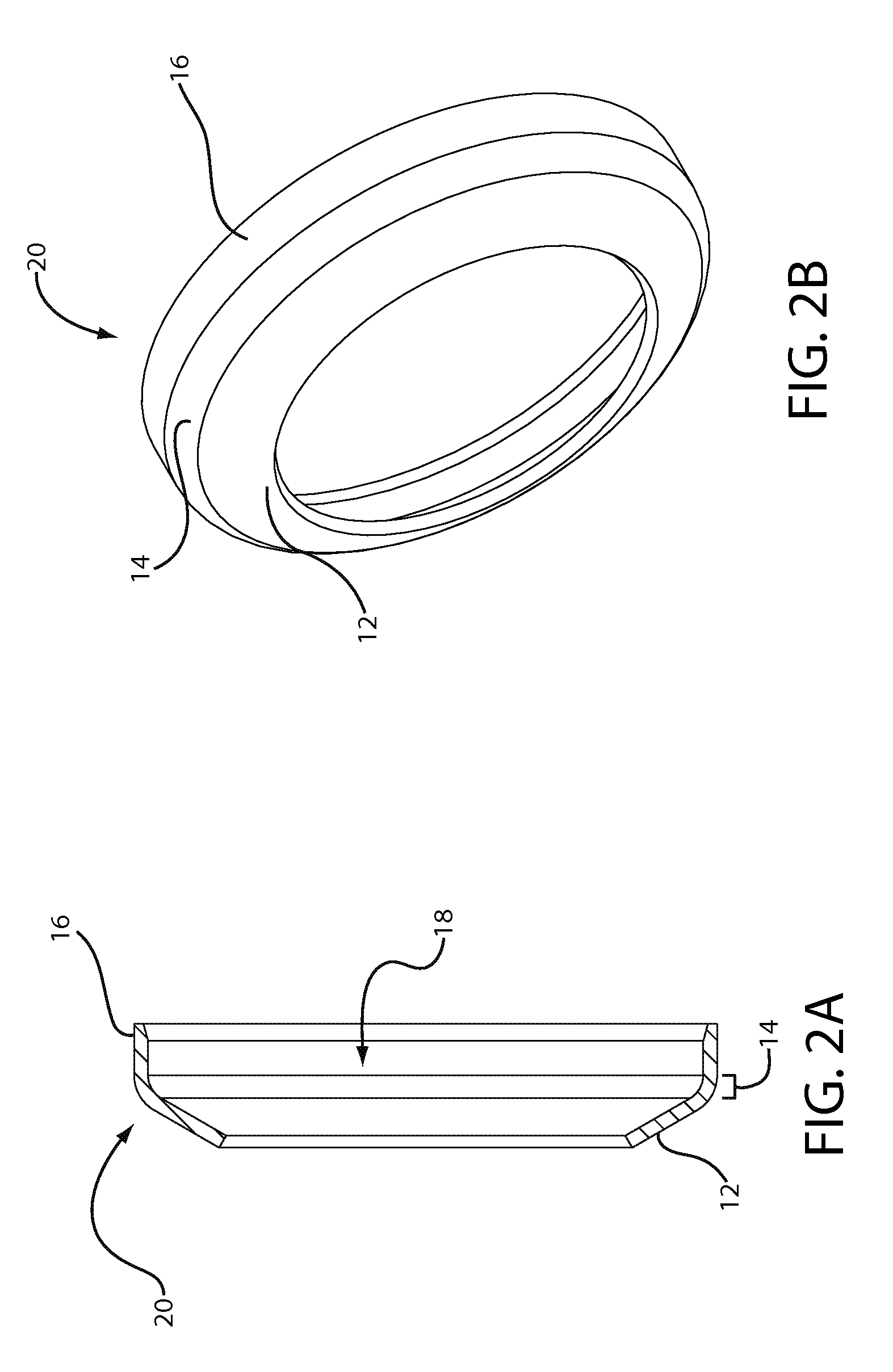CATV Port Terminator With Contact-Enhancing Ground Insert
- Summary
- Abstract
- Description
- Claims
- Application Information
AI Technical Summary
Benefits of technology
Problems solved by technology
Method used
Image
Examples
first embodiment
[0027]The last region of the flexible RF seal is the tubular insert portion 16. The tubular insert portion 16 is below the transition band 14. The tubular insert portion 16 is cylindrical in shape and depending on its embodiment can be used to sit on the inside or outside of a post within a coaxial cable connector. Defined within the tubular insert portion 16 is an insert chamber 18. The tubular insert portion 16, in the flexible RF seal 10, sits within a post member of a cable connector (as shown in FIG. 3). As a result, the insert chamber 18 assists in housing a coaxial cable on which the cable connector is placed.
[0028]Referring to FIGS. 2A and 2B, there is a second embodiment of the flexible RF seal, denoted by a reference numeral 20. The flexible RF seal 20 has the same three regions as the first embodiment: a flexible brim 12, a transition band 14, and a tubular insert 16. Further, defined within the flexible RF seal 20, as with the first embodiment 10, is an insert chamber 18...
second embodiment
[0033]Referring to FIG. 4, the seal 20 is shown coupled to connector 100. The seal 20 sits on the outside of the flange end 44 of the post 40. In this position, an end of tubular insert portion 16 abuts the seal 20 and the nut flange 34, with a remainder of tubular insert portion 16 sandwiched between the flange end 44 of the post 40 and a portion of nut 30. The flexible brim 12 extends past the flange end 44, but is not flush with the flange end 44 so that it can adapt to the shape of both the cable port and the connector 100 with the coaxial cable housed within it. In this embodiment, the post 40 does not require a lip 42, as was shown in FIG. 3 with the seal 10. Once the connector 100 engages the cable port and is advanced to have an inner conductor of the cable enter the port, the seal 20 can be deformed to a position necessary to fill gaps or tightly connect, physically and electrically, the connector 100 to the port.
[0034]Referring to FIG. 5, a port terminator 101 is shown. As...
PUM
 Login to View More
Login to View More Abstract
Description
Claims
Application Information
 Login to View More
Login to View More - R&D
- Intellectual Property
- Life Sciences
- Materials
- Tech Scout
- Unparalleled Data Quality
- Higher Quality Content
- 60% Fewer Hallucinations
Browse by: Latest US Patents, China's latest patents, Technical Efficacy Thesaurus, Application Domain, Technology Topic, Popular Technical Reports.
© 2025 PatSnap. All rights reserved.Legal|Privacy policy|Modern Slavery Act Transparency Statement|Sitemap|About US| Contact US: help@patsnap.com



